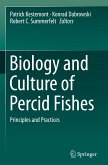This is the first English book to address the current development of closed recirculating aquaculture systems (cRASs) in Japan, and its implications for industry in the near future. It offers an introduction to the topic and discusses the industrial application of cRASs. Around Europe, cRASs using freshwater have been developed, but to date there is little information about cRASs using the saltwater. As such, the book introduces the technical development of cRASs using the saltwater in Japan and describes measures necessary for their industrialization. It also discusses in detail various species, e.g., flounder, pejerrey, kuruma shrimp, white shrimp and abalone, which have been raised in cRASs. Furthermore, it presents wide topics concerning the technological development of aquariums, an area in which progressive Japanese techniques dominate. Lastly, the book also examines CERAS and poly-culture in Japan.
The book is a valuable resource for a wide readership, such as localgovernment officers, energy-industry staff, maintenance and system engineers, as well as those from the construction, agriculture and fishery industries.
The book is a valuable resource for a wide readership, such as localgovernment officers, energy-industry staff, maintenance and system engineers, as well as those from the construction, agriculture and fishery industries.
"This book will introduce you to the world of "Recirculating Aquaculture Systems." If your goal is to enjoy that world and to find detailed information on its technical and scientific aspects, you've found the right book. ... The Japanese-made aquaculture system introduced in this book will invite you to consider the future of the system, and to promote aquaculture in your own country." (Translated from Japanese, Dr. Masaharu Tokuda, Nippon Suisan Gakkaishi, Vol. 84 (3), 2018)








